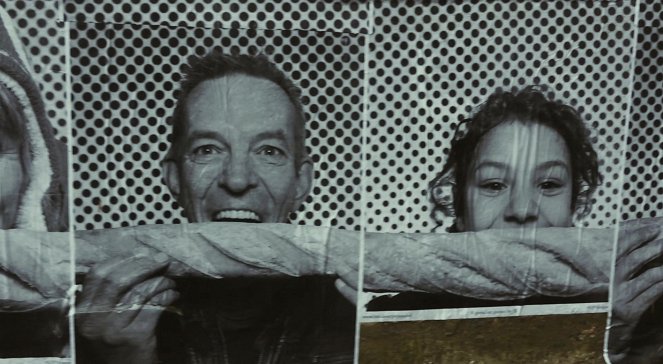Musik:
Matthieu ChedidStreaming (4)
Inhalte(1)
Sie könnten unterschiedlicher kaum sein: Agnès Varda, die alte Dame des Kinos, und JR, der 30-jährige zeitgenössische Künstler. Die beiden begegneten sich 2015 – und starteten ein gemeinsames Filmprojekt. Der Drehort: Frankreich. Gemeinsam gehen die beiden auf Menschen zu, suchen Gespräche und machen Fotos. Agnès Varda, eine jung gebliebene Frau um die 80, und der wesentlich jüngere Künstler JR begegnen sich im Jahr 2015. Die Folge des Zusammentreffens: der Dreh eines gemeinsamen Films. Auch wenn sie kaum unterschiedlicher sein könnten, haben sie doch vieles gemeinsam – vor allem die Lust an kreativer Zusammenarbeit. Der Kleinlaster von JR, umgebaut als Fotomobil, dient den beiden als Fortbewegungsmittel und Begleiter. Mit im Gepäck: die Songs des französischen Rockmusikers Mathieu Chedid. Die Filmemacher durchqueren das ganze Land von Nord nach Süd, lauschen den Geschichten der Menschen, denen sie begegnen, und machen unzählige Porträtaufnahmen. Ein Automechaniker, ein Postbote, ein Glöckner, Frauen von Minen- und Dockarbeitern, eine Ziegenzüchterin und am Ende sogar der Geist von Jean-Luc Godard kommen vor die Linse. Der umgebaute Kleinlaster versprüht dabei eine ganz besondere Magie. In ihm entstehen überlebensgroße Abzüge der Aufnahmen, die Varda und JR an die Scheunen verlassener Dörfer kleben. Der Film erzählt nicht zuletzt die Geschichte einer ungewöhnlichen Freundschaft, die während der Dreharbeiten an Tiefe gewinnt – überraschende Momente, Neckereien und herzliches Lachen überbrücken dabei jegliche Unterschiede. (arte)
(mehr)Kritiken (1)
Visages, villages is a celebration of the French countryside, teamwork and street art. With her fifty-years-younger and thirty-centimetres-taller colleague, Agnès Varda visits places that tell stimulating stories (about people, unemployment, the transformation of the landscape and the demise of the countryside) and allows them to speak by means of large-format photographs. The people they encounter are both the objects and co-creators of their works. They are not primarily interested in isolation, devastation and industrialisation, but rather in the joy of life and the possibility of creative comprehension of reality. They do not want to criticise and do not seek systemic solutions to problems; as conceptual artists, they “only” change the optics through which we view the world around us. Although they are separated by two generations, both of them have their own unrelenting enthusiasm and desire to discover and create. They always respond to the particular environment and intersperse the stories of others with their own (an eye examination, a running gag with sunglasses, excerpts from Varda’s earlier films), which appealingly lends an improvisational and unpredictable character to the film, which could have turned out to be a monotonous series of site-specific stopovers. The film culminates with a “meeting” with Godard that takes the trajectory of the narrative in a completely unexpected direction, which, however, Varda is able to use to the film’s benefit. Her reaction is another expression of the central theme of the documentary – how we see things (people, walls, buildings, ports) is more important than what they actually are. Agnès Varda’s perspective is empathetic, playful and joyful and without a hint of falseness, which makes Visages, villages one of the best feel-good films of recent years. 90%
()

